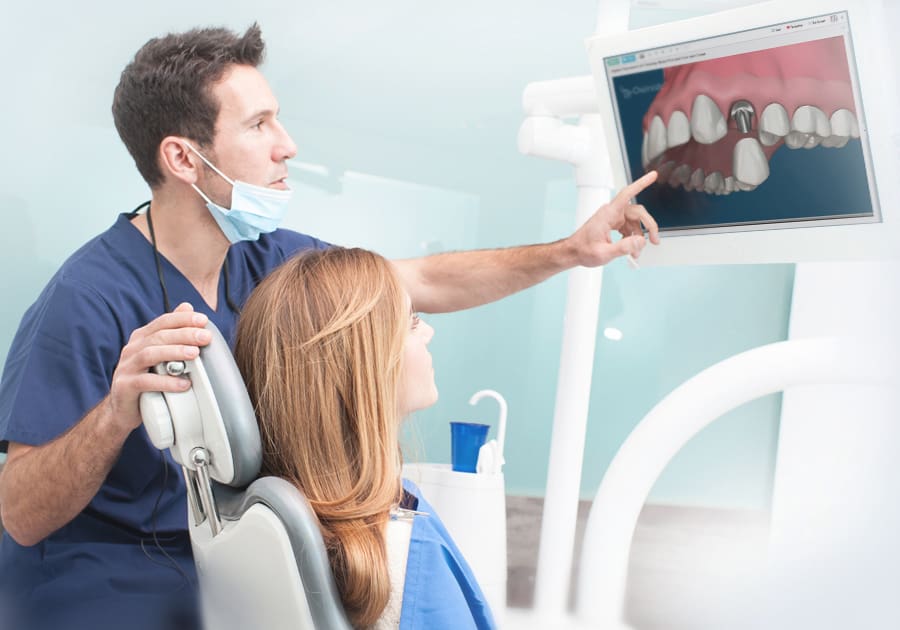Last updated on September 17th, 2020 at 11:33 am
 Want to increase collections?
Want to increase collections?
Want a couple of simple suggestions which you could start using more or less immediately?
Read on!
And just so we are clear, this post has little to nothing to do with insurances or following up on outstanding balances. So, if you hate that stuff (like me) you’re safe to keep reading!
If you want to collect more, it’s actually pretty simple. You have to:
Get more patients to accept their treatment plans.
Or more specifically:
Get more patients to accept their FULL treatment plans…NOW (not over the next three years – i.e. treatment on the five teeth they need work on versus the two that insurance will cover this year).
In the short term this is not even a new patient issue – unless you have a newer practice and no charts. Now, if you’ve been getting patients to accept full treatment plans, but new patients numbers are horrible, it will eventually develop into a new patient issue. But for most, a lack of new patients is not the immediate barrier to improving collections.
And look, that’s not to say new patients aren’t important – they are. But don’t run off thinking that new patients are the “solution” to your collections. They’re not. They’re the solution to building your practice in the long-term.
Now, after reading my point above, you might have thought “I need to learn to sell or present treatment more effectively.”  That’s true. It’s actually more or less a proven fact which I witness every month reviewing feedback from MGE clients attending the MGE Communication and Sales Seminars. So there you go, shameless plug for our services. You should check them out. But…I promised you some simple things you could do NOW. So let’s have a look!
Believe it or not, “sales” aptitude/communication ability is only a part of the equation when it comes to case acceptance. There are actually two other important factors that can dramatically affect case acceptance. They are:
- Attention, and
- Time
Attention
 Let’s start with explaining what I mean by “Attention.” When it comes to delivering dentistry, you have a schedule and (hopefully) policy on how long procedures take, how to schedule specific procedures, how the room should be set up, etc. On top of that, you track how much you charge for a procedure (production), and possibly have production goals per day, per month, quarter, etc. In other words, the average dentist places attention on “production” and delivery of dentistry in their office.
Let’s start with explaining what I mean by “Attention.” When it comes to delivering dentistry, you have a schedule and (hopefully) policy on how long procedures take, how to schedule specific procedures, how the room should be set up, etc. On top of that, you track how much you charge for a procedure (production), and possibly have production goals per day, per month, quarter, etc. In other words, the average dentist places attention on “production” and delivery of dentistry in their office.
That said, how much effort have you put into the structure and policy behind treatment presentations in your office?
After all, this is where the dentistry you’re delivering comes from (it has to be accepted first).
- Do you track how many presentations you make in a day, week, month?Â
- Do you set a goal for these – i.e. “I want to do two consults per day” or something of the sort?Â
- Do you track presented versus accepted tx plans and do you make an honest assessment of the accepted – i.e. someone “accepting” just what insurance covers this year versus their entire TX plan?
Do you place any attention at all on how many presentations you’re making and how frequently they are being done? Do you review patients coming in each day to determine who has outstanding treatment that needs to be done? Is there ANY goal orientation on this at all?
And let’s say something else right here, right now: someone who gives you a hard time (whether it’s a colleague or anyone else) for placing attention on treatment acceptance or having any goals in that area is, for lack of a better phrase, “full of it.” This has nothing to do with “money,” and everything to do with maintaining a high level or care for your patients. There is absolutely nothing wrong with getting patients to accept and pay for services they need and performing these services in a timely manner. For that matter, in my opinion, someone who doesn’t place utmost importance on this subject with their patients is doing them a disservice. I know that my dentist does and I know that my dentist cares enough to ensure I get what I need. Okay, enough soapbox. Back to the matter at hand.
This concept of attention and importance is simple but powerful.
I’ll give you an example: statistic management is an involved subject that you implement step-by-step over time. It starts with giving someone a statistic which measures their productivity and then having them keep a graph (there’s a lot more, but this is where you start). Almost every time, just starting to keep a graph makes the stat go up!  Why? Well, people don’t want to be down, I guess. You’re taking the Schedule Coordinator who was keeping no statistic and giving them the stat of percentage of appointments kept. Now there is some attention on the area. It’s become important and focused upon and now it improves.
So, if you’re not placing any attention or putting any special effort into measuring performance in this area of treatment acceptance, you’re going to have problems. This brings me to the next point:
 Time
Time
You could be the best “salesperson” in the world and close NOTHING if you don’t have the TIME to do it.
Example: Patient of record comes in for a recall exam. They have five undone inlays in their treatment plan. You’re with a patient and have to run in real fast to do a recall exam. You have five minutes. You ask them about doing the inlays, they say they’ll think about it and you have to run back to the patient in your chair. Patient is added to the “incomplete treatment log.” Cycle repeats six months from now.
Another example: New patient exam – let’s say patient sees hygiene first for probing, x-rays, etc. You have 15-20 minutes scheduled to do the exam. Patient needs about $5-6,000 worth of work. You have three minutes left in the exam and try to explain the treatment to them and send them to the front. Later on when you check back with the front desk, you find that the patient “couldn’t afford” their treatment right now as they are going on a cruise.
The problem with each of these? TIME. You had absolutely NO TIME to answer questions, explain treatment, handle concerns, fears, etc. I mean after all, how important is something the doctor spent five minutes explaining? In the patient’s mind, it won’t seem very important at all. Again, you could take the ultimate “salesperson” and they would have the same problem.
Or worse, all the patient heard in that five minutes was “root canal,” or “inlay,” etc. Some of which they understood, some of which they didn’t. For that matter, see this article. The upshot? According to this New York Times article of 2007, “If you are a typical patient, you remember less than half of what your doctor tries to explain.”
But…you know what part they DID understand? The cost. They know what that is. And again, who’s going to drop big money on something they didn’t fully understand?
The handling is simple: block time for “consultation appointments.” Consultations are not just for full mouth reconstructions. What you use them for is up to you, but I would think that the $5-6,000 (or even $2-3,000 case) might justify a short consultation.
Consultations could be no-charge and should be distraction-free. We’ll get into when to schedule them in a bit, but let’s look at a simple formula.
If you (or your patient) does not have adequate time in your assessment to discuss their treatment plan on the spot (during the new patient exam or recall appointment), you can schedule them to come back for a consultation…the sooner (like tomorrow) the better! The bigger the case the more time you may wish to allocate.
You could try doing consultations first thing in the morning and first thing after lunch. If you schedule most of your production in the morning, do your consultations for the half hour just prior to treatment. Now, here’s where morning consultations can be advantageous. Let’s say your productive appointment that morning cancels, chances are, if you have one or two patients scheduled for consults that morning one of them could stay and start treatment right away – replacing that cancelled productive procedure.
After lunch works for consults as well, in case you work through lunch. You could grab a sandwich and see your consult.
Again, keep these consults distraction free. You need to focus on the patient. Don’t schedule any other procedures for yourself during. I would schedule it so I didn’t even have to get up and numb a scaling patient in hygiene during the consult. Schedule recalls during that period instead. You can do the recall exam after the consult.
Ultimately, you’re in charge of your own clinical and would have to decide how to make this work.
Now, you’ll find (even if you’re not all that good at presentation to start off) just having adequate time will bring about improvement. And this is something you could do more or less right away.
So, there you have it – put some time and attention on this area as above and, while this is not the ultimate solution, it’s a start. If you really want to master this subject, do the MGE Communication and Sales Seminars. Chances are, you know someone who has done them. Ask. You’ll find out how good they really are! I hope to see you there.


No Comments
Be the first to start a conversation